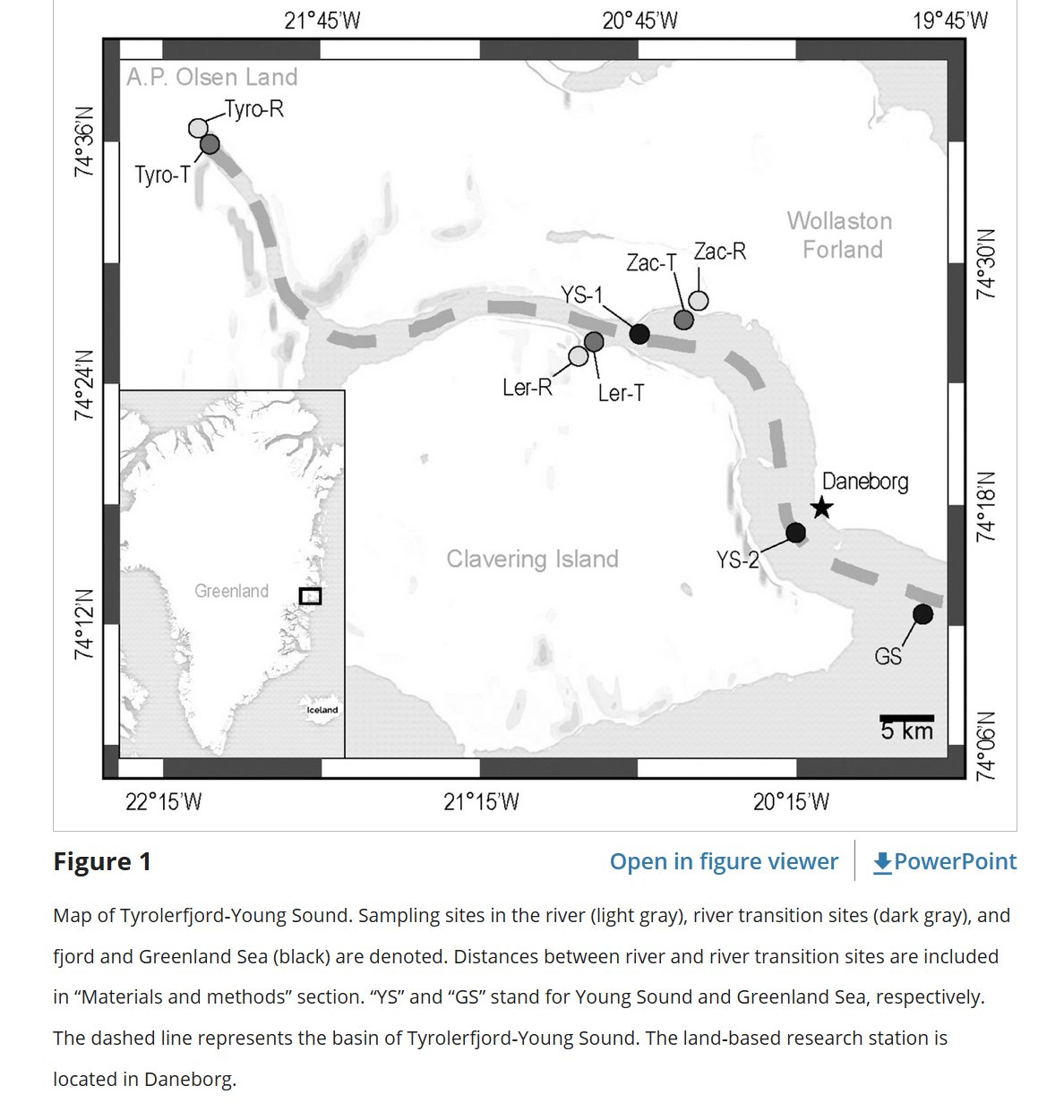Sharp contrasts between freshwater and marine microbial enzymatic capabilities, community composition, and DOM pools in a NE Greenland fjord
New publication by John Paul Balmonte, Harald Hasler‐Sheetal, Ronnie N. Glud, Thorbjørn J. Andersen, Mikael K. Sejr, Mathias Middelboe, Andreas Teske, Carol Arnosti

Abstract:
Increasing glacial discharge can lower salinity and alter organic matter (OM) supply in fjords, but assessing the biogeochemical effects of enhanced freshwater fluxes requires understanding of microbial interactions with OM across salinity gradients. Here, we examined microbial enzymatic capabilities—in bulk waters (nonsize‐fractionated) and on particles (≥ 1.6 μm)—to hydrolyze common OM constituents (peptides, glucose, polysaccharides) along a freshwater–marine continuum within Tyrolerfjord‐Young Sound. Bulk peptidase activities were up to 15‐fold higher in the fjord than in glacial rivers, whereas bulk glucosidase activities in rivers were twofold greater, despite fourfold lower cell counts. Particle‐associated glucosidase activities showed similar trends by salinity, but particle‐associated peptidase activities were up to fivefold higher—or, for several peptidases, only detectable—in the fjord. Bulk polysaccharide hydrolase activities also exhibited freshwater–marine contrasts: xylan hydrolysis rates were fivefold higher in rivers, while chondroitin hydrolysis rates were 30‐fold greater in the fjord. Contrasting enzymatic patterns paralleled variations in bacterial community structure, with most robust compositional shifts in river‐to‐fjord transitions, signifying a taxonomic and genetic basis for functional differences in freshwater and marine waters. However, distinct dissolved organic matter (DOM) pools across the salinity gradient, as well as a positive relationship between several enzymatic activities and DOM compounds, indicate that DOM supply exerts a more proximate control on microbial activities. Thus, differing microbial enzymatic capabilities, community structure, and DOM composition—interwoven with salinity and water mass origins—suggest that increased meltwater may alter OM retention and processing in fjords, changing the pool of OM supplied to coastal Arctic microbial communities.
